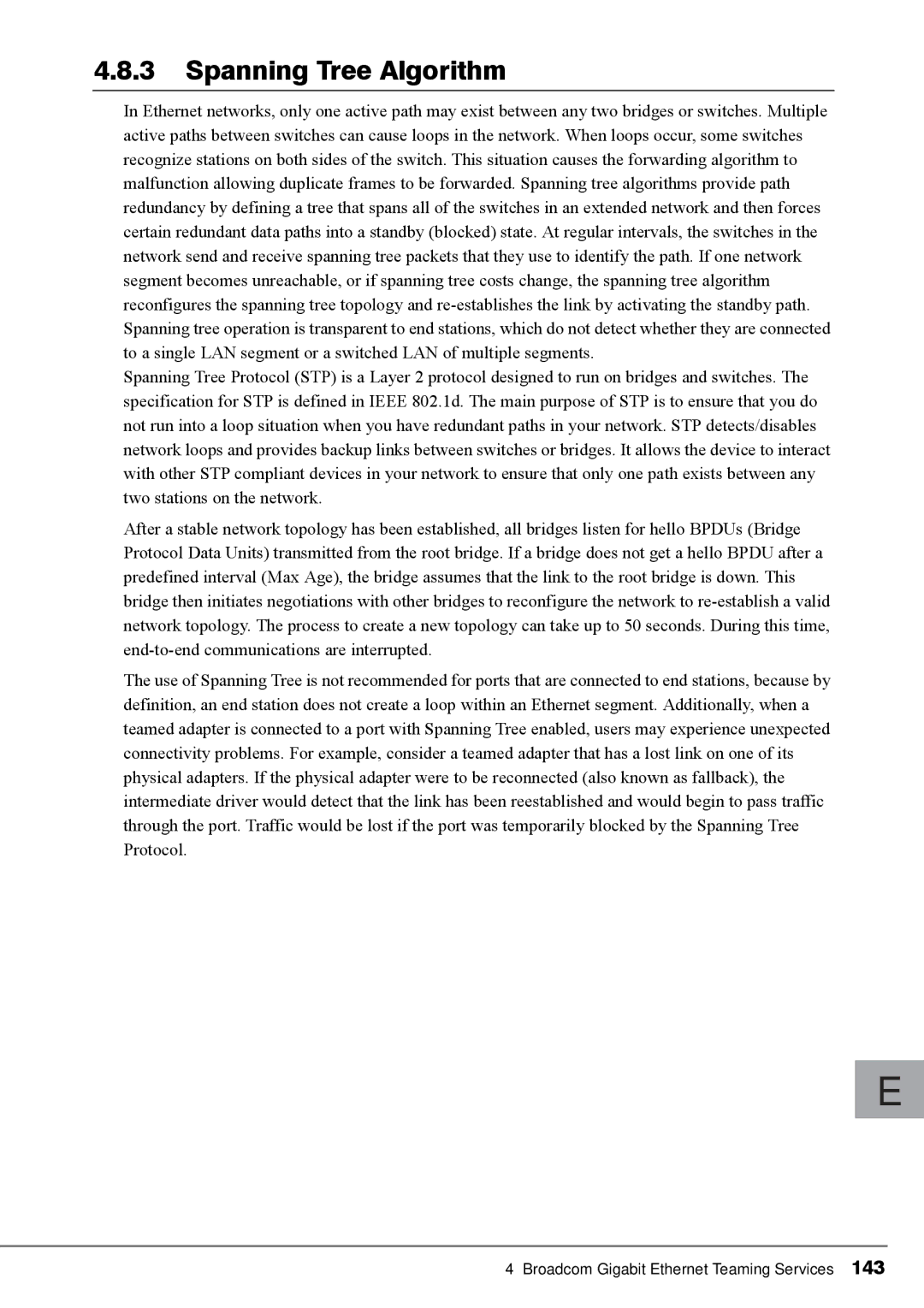
4.8.3Spanning Tree Algorithm
In Ethernet networks, only one active path may exist between any two bridges or switches. Multiple active paths between switches can cause loops in the network. When loops occur, some switches recognize stations on both sides of the switch. This situation causes the forwarding algorithm to malfunction allowing duplicate frames to be forwarded. Spanning tree algorithms provide path redundancy by defining a tree that spans all of the switches in an extended network and then forces certain redundant data paths into a standby (blocked) state. At regular intervals, the switches in the network send and receive spanning tree packets that they use to identify the path. If one network segment becomes unreachable, or if spanning tree costs change, the spanning tree algorithm reconfigures the spanning tree topology and
Spanning Tree Protocol (STP) is a Layer 2 protocol designed to run on bridges and switches. The specification for STP is defined in IEEE 802.1d. The main purpose of STP is to ensure that you do not run into a loop situation when you have redundant paths in your network. STP detects/disables network loops and provides backup links between switches or bridges. It allows the device to interact with other STP compliant devices in your network to ensure that only one path exists between any two stations on the network.
After a stable network topology has been established, all bridges listen for hello BPDUs (Bridge Protocol Data Units) transmitted from the root bridge. If a bridge does not get a hello BPDU after a predefined interval (Max Age), the bridge assumes that the link to the root bridge is down. This bridge then initiates negotiations with other bridges to reconfigure the network to
The use of Spanning Tree is not recommended for ports that are connected to end stations, because by definition, an end station does not create a loop within an Ethernet segment. Additionally, when a teamed adapter is connected to a port with Spanning Tree enabled, users may experience unexpected connectivity problems. For example, consider a teamed adapter that has a lost link on one of its physical adapters. If the physical adapter were to be reconnected (also known as fallback), the intermediate driver would detect that the link has been reestablished and would begin to pass traffic through the port. Traffic would be lost if the port was temporarily blocked by the Spanning Tree Protocol.
E
